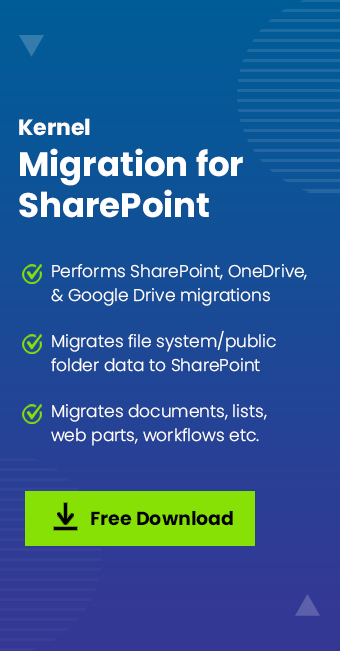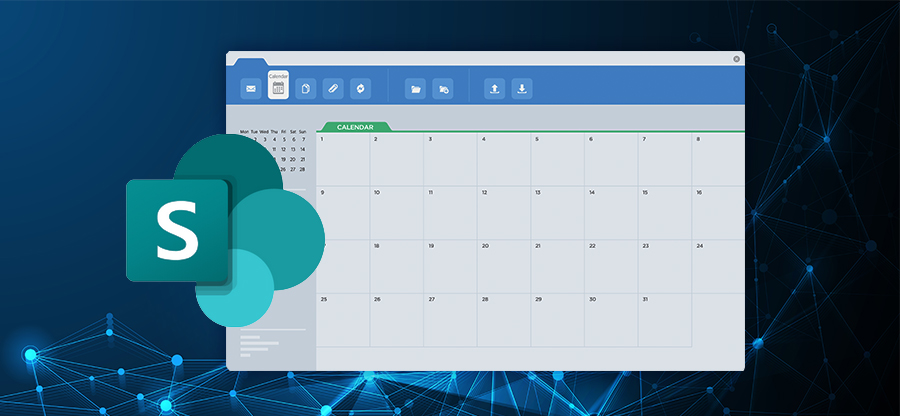Read time: 5 minutes
With the increase in remote working, the demand for intranet management is continuously evolving. Using the right tools, your employees can quickly and easily build intranet sites. These sites provide a centralized location for your employees where they can securely communicate and collaborate with each other. Moreover, an Intranet site helps employees stay up-to-date with their organization.
While developing an effective Intranet site, the two major platforms that come to mind are – Google Sites and Microsoft SharePoint. Both these platforms provide advanced site management tools and make it easy for organizations to keep working remotely and maximize their cloud collaboration gains.
What are Google Sites?
It is one of Google Workspace apps that allows users to create and customize websites without requiring coding and web design skills. With the help of Google Sites, users can add text, images, and other information to their websites. They can even organize the layout of the site and create navigation menus.
Conveniently, it integrates with other Google Workspace apps that help users to easily collaborate and incorporate content from Google data.
What is SharePoint?
Microsoft SharePoint is a part of the Microsoft 365 suite and a cloud-based platform that provides a range of content management and collaboration capabilities. It is used to create websites that organizations can use later to store, organize, and share documents/information among team members and departments.
It comes with some advanced features like workflow management, version control, better security, and access controls. SharePoint integrates with other Microsoft 365 apps, allowing users to collaborate and access documents in real-time within the SharePoint environment.
Comparison between SharePoint and Google Sites
Let’s find out the significant differences between SharePoint and Google Sites so it becomes easy for you to identify the best one as per your business requirements.
Both SharePoint and Google Sites provide simple methods to create and build a website. In SharePoint, you have a choice to select a site type and template for a team. There is also a built-in WYSIWYG editor to edit multi-column pages.
In Google Sites, you have a choice to select themes and page templates, including file cabinet, announcement, and list. It also has a WYSIWYG editor to edit pages.
But, when it comes to adding multimedia files and site updates, Google Sites is slightly better than SharePoint. Google Sites has some intuitive features that allow users to add files and update the site within seconds.
In SharePoint, files can be created within a site or added from a different location and displayed in a list view or thumbnail view. It also develops custom apps and workflows with PowerApps and Flow integration in document libraries and lists.
Whereas in Google Sites, Files, conversations, and images are created and accessed from outside the site in email and Drive.
So, in document management, SharePoint has a clear edge over Google Sites as it has many document management features.
SharePoint is an effective collaborative platform where files can be co-authored with Word, Excel, or PowerPoint. These files can be displayed on a page, linked to a page, or added to a document library. With SharePoint, you can easily find out things your colleagues are working on, recently used sites, news relevant to you, and sites based on recent searches. You can even check out or unshared files to prevent changes.
Whereas in Google Sites, files are co-authored within Drive. You can link files from Drive to a page or add them to a file cabinet. You can also lock files to prevent changes, and users get notifications whenever a file changes.
Google and Microsoft have the most secure data centers, providing advanced security features to protect your information from external attacks. In SharePoint, permissions can be applied to a site, page, library, collection, file, folder, or list. The Permission levels in SharePoint are –
- Site owners
- Site members (edit)
- Site visitors (read)
There are also some other improved security features of SharePoint, like SMTP ports, SMTP encryptions, and encrypted connections, providing business teams with more flexibility and control over users.
In Google Sites, permissions can be applied to a site, and the permission levels are –
- Is owner.
- Can edit.
- Can view.
Undoubtedly, SharePoint holds a significant advantage over Google sites in terms of security.
SharePoint has a mobile app for iOS, Android, and Windows phones. SharePoint sites also feature a responsive design to adapt to mobile web browsers. Whereas google sites has no mobile app, but it contains a mobile-friendly responsive design.
SharePoint, being a robust enterprise platform, has a suite of features that extend well beyond basic document management and collaboration. It supports a wide array of organizational needs, including Intranet, Extranet, advanced search capabilities, workflow automation, and Key Performance Indicator (KPI) dashboards.
On the other hand, Google Sites, part of the Google Workspace, provides a more straightforward solution for document sharing and website creation. It is particularly effective for quick setup and ad-hoc team collaborations. Google Sites is user-friendly and integrates easily with other Google Workspace apps that makes it an ideal choice for smaller teams or projects with less complex requirements.
SharePoint provides a highly customizable environment that can be tailored to meet specific organizational needs. It offers deep integration with the Microsoft 365 suite and allows smooth collaboration across applications like Word, Excel, and PowerPoint. SharePoint’s adaptability extends to its mobile app availability across iOS, Android, and Windows phones, ensuring access on the go.
Google Sites offers less in terms of customization and integration. While it boasts a responsive design for mobile browsers, the absence of a dedicated mobile app might limit accessibility for users needing on-the-move connectivity to their collaboration platforms.
| Features | SharePoint | Google Sites |
| Creating sites |
|
|
| Document management |
|
|
| Collaboration |
|
|
| Security |
|
|
| Adaptability | Mobile app for iOS, Android, Windows phones | Mobile-friendly design, no dedicated app |
| Enterprise-level features and scalability |
|
|
| Customization and integration |
|
|
Conclusion
Undoubtedly, Google Sites and SharePoint are the best in developing intranet sites and providing effective user collaboration. But, based on the above comparison, we can identify that Google Sites is a great tool if you don’t have an enterprise collaboration platform and require a document-sharing site quickly. However, it fails to provide the depth of advanced features that SharePoint offers. SharePoint is a true enterprise platform with enhanced document management and collaboration capabilities.
If your business requires an advanced security and effective collaboration platform, we suggest you use SharePoint Online. To quickly migrate data to SharePoint with complete data integrity, we have an automated tool named Kernel Migration for SharePoint, which easily migrates your files from local or remote servers to SharePoint. To know more about it download SharePoint migration tool.







